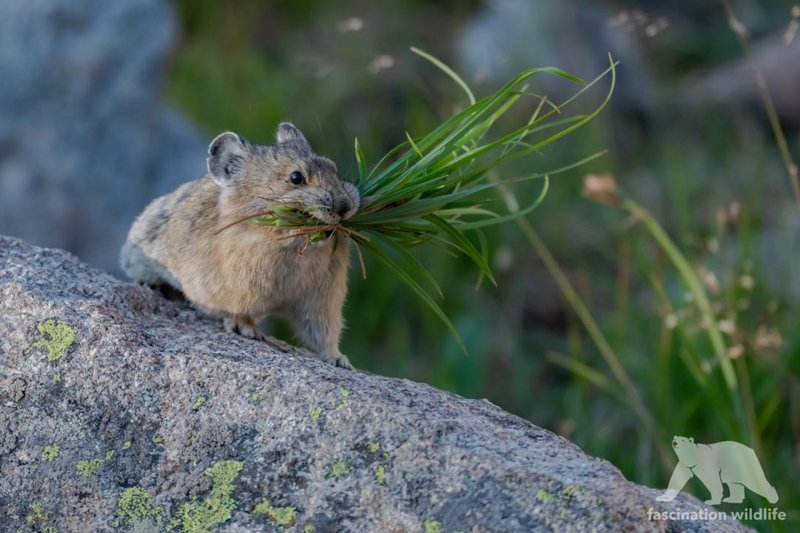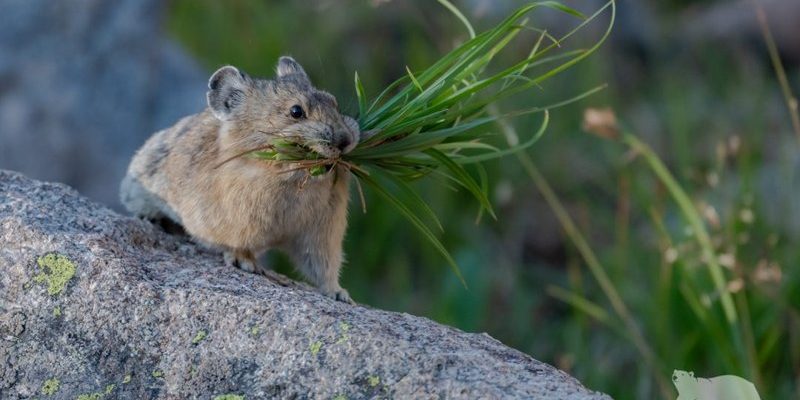
Have you ever wondered about those adorable little creatures that seem to scurry around the rocky alpine slopes? That’s right, we’re talking about the pika! These small mammals are members of the rabbit family but are often mistaken for a mouse due to their size and shape. Pikas are less than a foot long and have a round body, short limbs, and large ears that give them a cute, cartoonish appearance. They’re found primarily in the mountain ranges of North America and parts of Asia, thriving in rocky habitats where they can hide from predators and forage for food.
When you think of pikas, imagine a mix between a fluffy teddy bear and a tiny kangaroo—curious and full of life. They have a unique whistle call that can be heard echoing across their mountainous homes, adding a delightful soundscape to their stunning environments. The pika’s charm doesn’t stop at its looks or sounds; their fascinating lifestyle and behaviors make them a remarkable subject of study in the animal kingdom.
Physical Characteristics
Pikas are compact, robust little creatures characterized by their short legs and large ears. Most adult pikas weigh between 5 to 7 ounces (around 140 to 200 grams) and measure about 7 to 9 inches (17 to 23 cm) in length. Their fur is generally grayish or brownish, providing excellent camouflage against the rocky terrains they inhabit. These adaptations are vital for their survival, as their natural habitats can expose them to various predators, including hawks and foxes.
One of the most remarkable features of pikas is their ability to survive in cold climates. They have a thick fur coat that keeps them warm during the chilly mountain nights, and this coat changes with the seasons—lighter in summer and thicker in winter. Pikas do not hibernate like some other small mammals; instead, they enter a state of torpor during extremely cold weather, reducing their metabolic rate to conserve energy.
Habitat and Distribution
Pikas thrive in alpine and subalpine regions, typically residing in rocky slopes, talus fields, and boulder-strewn areas. Their preference for these locations is not just about shelter; it also provides ample foraging opportunities. Pikas are herbivores, meaning they primarily eat a diet of grasses, herbs, and other plants. They tend to favor areas where plant life is abundant, allowing them to gather enough food to store for the harsh winter months ahead.
These little creatures are most commonly found in regions such as the Rocky Mountains, Sierra Nevada, and the various mountain ranges across Asia. In recent years, however, some populations have been threatened by climate change. As temperatures rise, these animals are forced to move upwards in search of cooler habitats, which can limit their population and distribution further.
Diet and Foraging Behavior
Pikas are known for their unique foraging behavior, which often involves creating “hay piles.” During spring and summer, these clever little mammals gather an assortment of plants and store them in sheltered locations to eat during the winter months. This caching behavior is vital; it ensures they have enough food to survive when the snow covers the ground and fresh vegetation is not available.
A typical pika diet consists of a variety of vegetation, including grasses, clovers, and wildflowers. They are selective eaters, often opting for the most nutritious parts of the plants, such as leaves and buds. Interestingly, pikas have a unique adaptation in their digestive system that allows them to thrive on this fibrous diet, as they can break down tough plant materials effectively.
Social Behavior
You might expect pikas to be social animals, but they are quite the opposite! These creatures are generally solitary or live in small family groups. Each pika has a defined territory that it defends against others. They communicate primarily through vocalizations—those charming whistles we mentioned earlier. This communication is crucial for alerting others about predators or establishing territory boundaries.
When pikas do come together, it’s usually for mating purposes. During the summer, male pikas may mate with several females, leading to a population of diverse offspring. The breeding season is typically brief, with females giving birth to litters of 2 to 6 young after a gestation period of about 30 days. These little ones are weaned quickly and learn essential survival skills from their mothers, though they often venture out on their own after several weeks.
Conservation Status
Unfortunately, pikas are facing challenges due to climate change. Their habitat is sensitive to temperature changes, and rising temperatures can lead to habitat fragmentation, pushing them into smaller, isolated areas. According to some studies, certain pika populations are declining, and this has alarmed conservationists.
Efforts to conserve these unique animals include habitat protection and monitoring their populations. As we continue to study their behaviors and needs, it’s crucial to raise awareness about their vulnerability. By understanding the ecological role pikas play—such as their influence on plant communities—we can better appreciate why their survival is essential for the broader ecosystem.
Interesting Facts About Pikas
| Scientific Name: | Ochotona |
| Typical Size: | 7 to 9 inches long |
| Weight: | 5 to 7 ounces |
| Habitat: | Rocky alpine and subalpine areas |
| Diet: | Herbivorous, primarily grasses and herbs |
| Behavior: | Solitary, with vocal communication |
| Lifespan: | 2 to 7 years in the wild |
FAQ
What do pikas look like?
Pikas have a stocky body with short legs and large ears. Their fur color ranges from grayish to light brown, allowing them to blend into their rocky habitats easily. They are typically about 7 to 9 inches long, making them quite small but very cute!
Are pikas endangered?
While not all pika species are endangered, some populations are facing serious threats due to climate change. The rising temperatures are causing habitat loss and fragmentation, leading to declines in certain regions. Conservationists are actively working to monitor and protect these populations to ensure their survival.
How do pikas stay warm in the cold mountains?
Pikas are well adapted to cold climates. They have thick fur coats that insulate them from frigid temperatures. Additionally, they enter a state of torpor during extreme cold to conserve energy, allowing them to survive the harshest winters.
What do pikas eat?
Pikas are herbivores, predominantly feeding on a diet of grasses, herbs, and other vegetation. They are known for their unique behavior of creating “hay piles” in which they store food for winter months, ensuring they have enough nutrition when fresh plants are scarce.
How do pikas communicate?
Pikas communicate through a series of high-pitched whistles and calls, which serve various purposes such as warning fellow pikas of potential dangers or defending their territory. These vocalizations are a key part of their social structure, even though they are generally solitary creatures.
Can pikas jump like rabbits?
Pikas aren’t quite known for their jumping abilities like rabbits, but they can navigate their rocky habitats with agility. They may not leap great distances, but they do climb and scurry effectively to evade predators and reach food sources.
Where can I find pikas?
Pikas are primarily found in the mountainous regions of North America, such as the Rocky Mountains and Sierra Nevada, as well as certain parts of Asia. They prefer rocky areas that provide shelter and abundant vegetation for foraging.
Do pikas have predators?
Yes, pikas have several natural predators. Birds of prey, like hawks and eagles, as well as mammals such as foxes and weasels, often hunt pikas. Their small size and reliance on rocky habitats make them particularly vulnerable, especially when surprised.
How long do pikas live?
The lifespan of pikas can vary significantly, ranging from around 2 to 7 years in the wild. Factors like habitat quality, availability of food, and predation can influence their longevity. In protected environments, they may live longer due to reduced stressors.
What role do pikas play in their ecosystem?
Pikas are essential for their ecosystems, serving as a food source for various predators. Additionally, their foraging habits can influence plant communities by promoting growth and regeneration, thereby contributing to the overall health of their mountainous habitats.

